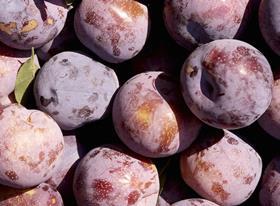
After one of Murcia’s worst citrus seasons in recent memory, things are now looking up for the Spanish city’s fruit growers. High quality has brought expectations of a successful stonefruit campaign, and local company Gruventa is optimistic about demand and prices.
“The expectations are very favourable, and despite how difficult the citrus season has been, we believe we will see great agility on the market,” a company spokesperson said. “Provided the sector properly manages the overlap between the different production areas, we see no reason not to be optimistic about demand and prices.”
With harvesting of early varieties now well underway in peaches, nectarines and flat peaches, producers expect volumes to be slightly higher than in 2018 and more in line with a normal year. Apricot volumes are forecast to fall by 25-30 per cent due to adverse climatic events.
From a marketing perspective, there will be some exciting activity in the watermelon sector this summer, with Anecoop’s 2019 Bouquet campaign focusing on promoting inclusion and diversity through sport. The fruit cooperative group has invested nearly €900,000 in the campaign, which covers Spain, France, the Czech Republic, Belarus and Poland. A number of activities are planned for point of sale, radio, television, social networks, aerial advertising, and sporting and media events. Sports events supported by the campaign include a rugby festival involving several local teams; an Inclusion and Sports Challenge organised by cerebral palsy charity Avapace; and sporting events La Mar Soidaria and Marea Azul Solidaria.
From a production perspective, commercial director Miguel Abril says Anecoop expects to market around 150,000 tonnes of Bouquet watermelons this year, and growers are looking to extend the campaign with new varieties. The group’s Bouquet range now includes red and yellow-striped watermelons, black-skinned watermelons, and mini watermelons.
Further down the Spanish coastline, around Málaga, avocados and mangoes are the key products, and the city was recently host to the World Avocado Organization’s first media event in Europe. Booming demand for the green fruit in Europe has prompted Spanish orchard expansion in recent years, and it is between Málaga and Granada that almost half of all avocados produced in Europe are planted. In the last four years Spanish production of the fruit has doubled.
The Spanish avocado sector faces major hurdles, however, with water shortages in and around Málaga stalling production growth and forcing producers to start to shift their focus elsewhere. Growers have noted that despite the fact that demand in some European markets such as the UK is growing by around 30 per cent a year, restrictions on water usage have meant production in the region has remained stable for years.
Frustrated by what they see as water mismanagement – the Grazalema mountains, which have the highest rainfall in Spain, are just 50km away from Málaga’s avocado orchards and yet there are tight restrictions on water use – producers are now looking to the east and south west of Spain, to areas where production was not previously thought possible. Trees have been planted in Huelva, near the Portuguese border; in Valencia, where growers have been switching from oranges to avocados; and in Portugal, which is believed to have around 1,000ha of avocado production, much of it in the Algarve.
One of Spain’s biggest avocado producers, Trops, recently opened a new packhouse in the Algarve, which will serve as the company’s centre of operations in Portugal. And with avocado production booming around the world, notably in Colombia, such expansion will be important if suppliers like Trops wish to maintain their market share. Much has been made of the rise in avocado volumes from Colombia – particularly in Spain, which shares the same production window – but Trops’ chief executive Enrique Colilles insists that the quality of Spanish avocados, combined with a more reliable climate, sets Spain apart from its rival.
Despite this, the chief executive of the World Avocado Organization, Xavier Equihua, insists that country-of-origin promotions are limited in their effectiveness since “consumers don’t really care where they’re from”. The most important thing is to promote avocados for their health benefits, and to educate people on the various ways they can be consumed, he says.
According to the American, China is the market with the greatest potential for avocado exports, but boosting consumption in Europe remains the organisation’s focus. “Europe is an amazing market because the 650 million tonnes sold in Europe last year were consumed in ten countries so what about the other 28 countries?” he says. “It’s a question of educating people in how to eat avocados – that’s why Eastern Europe and Russia are so interesting – and the southern markets are also promising. The per capita consumption of avocados in Spain is 1.2kg per person, which is very low, and in Italy it’s about 200g, which is nothing.”
The reason that Spain is still a small consumer of avocados, despite being Europe’s only major producer of the green fruit, is that the diet is very orthodox, Equihua explains. “If you see what Spanish people eat every day, they’re eating Spanish food, so how do we introduce avocado into the Spanish diet? That is the challenge,” he says.



